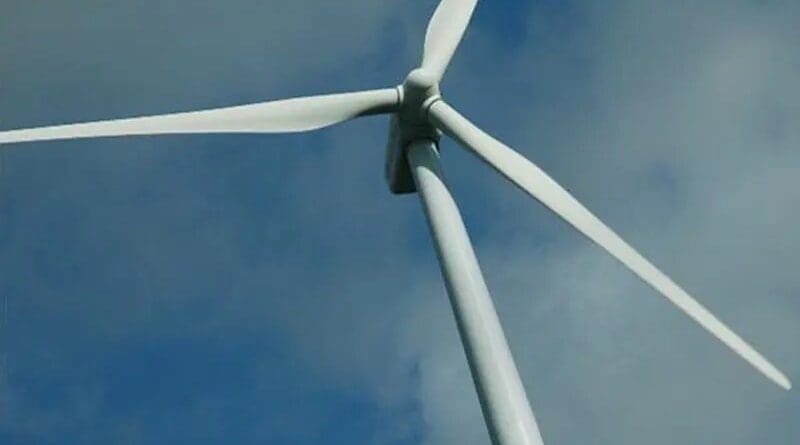Why India’s Economic Reforms Are Climate Unfriendly – Analysis
By IPCS
By Niharika Tagotra*
The economic and fiscal policies of a government are the prime indicators of its priorities. In this regard, the Union Budget 2017 and the recently introduced Goods and Services Tax (GST) bill, hailed as a part of the larger economic reforms undertaken by the government, have little to show for in terms of India’s climate change commitments. That the economic policies and tax reforms appear to be inconsistent with the country’s climate change obligations highlights how policy makers in India are yet to give any serious thought to the issue.
Budget 2017: Provisions for the Renewable Energy (RE) sector
Budget 2017, in a major push towards achieving greater energy security, introduced policies for the conventional energy sector. These included setting up of two new strategic crude oil reserves in Odisha and Rajasthan; and a significant cut in the import duty on Liquefied Natural Gas (LNG) from 5 per cent to 2.5 per cent. Additionally, the budget announced 20 GW of solar capacity addition and feeding 7,000 railway stations with solar power along with a cut in import duty on solar tempered glass from 5 per cent to 0 per cent. However, these incentives for solar energy systems are far too little to provide momentum to the clean energy transition in India.
Moreover, the Budget 2017 was silent on the most pressing issues concerning the renewable energy sector, including the extension of the Generation Based Incentive (GBI) scheme for the wind energy sector that expired on 31 March, 2017. This scheme, which has incentivised investments in the sector, was not extended further by the union government, and this is bound to affect the viability of the sector.
The budget also failed to provide incentives for the rooftop solar project that could contribute approximately 15 GW of energy by 2022. The rooftop solar project could have been easily integrated with the larger housing schemes announced by the government, including the PM Gramin Aawas Yojana. While this would have helped normalise the domestic production of solar energy in the country, the lack of any creative integration of housing and clean energy under the larger umbrella of sustainable infrastructure is reflective of the union government’s little regard for the issue.
Additionally, the budget was silent on the issue of strengthening the Renewable Purchase Obligations (RPO) market for the RE sector, the sluggishness of which has contributed to the low demand and lower investments in the sector.
GST: Impact on the RE Sector
While the budget gave little space to the clean energy sector, the recently passed GST bill is expected to further dent the RE market in India. As power (particularly electricity duty) is expected to be kept out of the purview of the GST, the prices of electricity are expected to escalate by 6-18 per cent. This is because while the companies will have to pay GST for their inputs, their taxes will not be refunded as the output (electricity) is exempted from the GST, and will continue to be subjected to state specific electricity duties. For the RE sector, inputs such as solar panels and wind turbines will be taxed at 18 per cent under the new tax regime, up from the current 12 per cent, with no benefit of input tax credit. This will most likely result in a major cascading effect for the sector, thus pushing up prices. On the contrary, the GST is expected to bring down prices for coal as many state cesses that were previously charged on the dry fuel are expected to be subsumed under the GST.
Meanwhile, tax exemptions previously provided for the sector are expected to be done away with. The Interstate GST (IGST) fixed at 20 per cent for interstate procurements could further push up the prices of goods that are procured by states through interstate commerce for the generation or distribution of electricity. Earlier, these items were provided with a concessional rate of Central Sales Tax of 2 percent.
However, in comparison, environment unfriendly items including petrol and diesel are proposed to be kept out of the purview of the GST in order to avoid the “inflationary pressures” that could affect the pricing of these commodities. This will, in turn, have an adverse impact on the bio-fuel industry that currently depends on the Oil Marketing Companies (OMCs) for the production, assimilation and distribution of bio-fuels. While the prices of conventional fuels are expected to remain the same, the prices of bio-fuels are expected to go up by 11-14 per cent under the new GST regime. The OMCs, which at present use a 5 per cent bio-diesel and 10 per cent ethanol mixed with petrol, are expected to bear the increase in the cost of these fuels, a move that could further disincentivise their use.
Looking Ahead
The broader economic reforms undertaken by India appear to be out of sync with the pressing concerns about climate change mitigation. As a part of its voluntary commitments under the 2015 Paris climate deal, India had agreed to cut down on the emission intensity of its GDP by 20-25 per cent. This was to be accomplished by using fiscal instruments like promoting the RPO market, increasing taxes on petrol and diesel as well as strengthening the institutional arrangement for RE power. Instead, however, the government policies have essentially sought to disincetivise investments in the renewable energy sector.
In order to channelise its commitments towards the global climate change mitigation, India will need to harmonise its social, economic and environmental policies. That climate change is fast growing into a national security issue should make the government more pro-active and less reactive in its outlook.
* Niharika Tagotra
Researcher, CRP
E-mail: [email protected]

